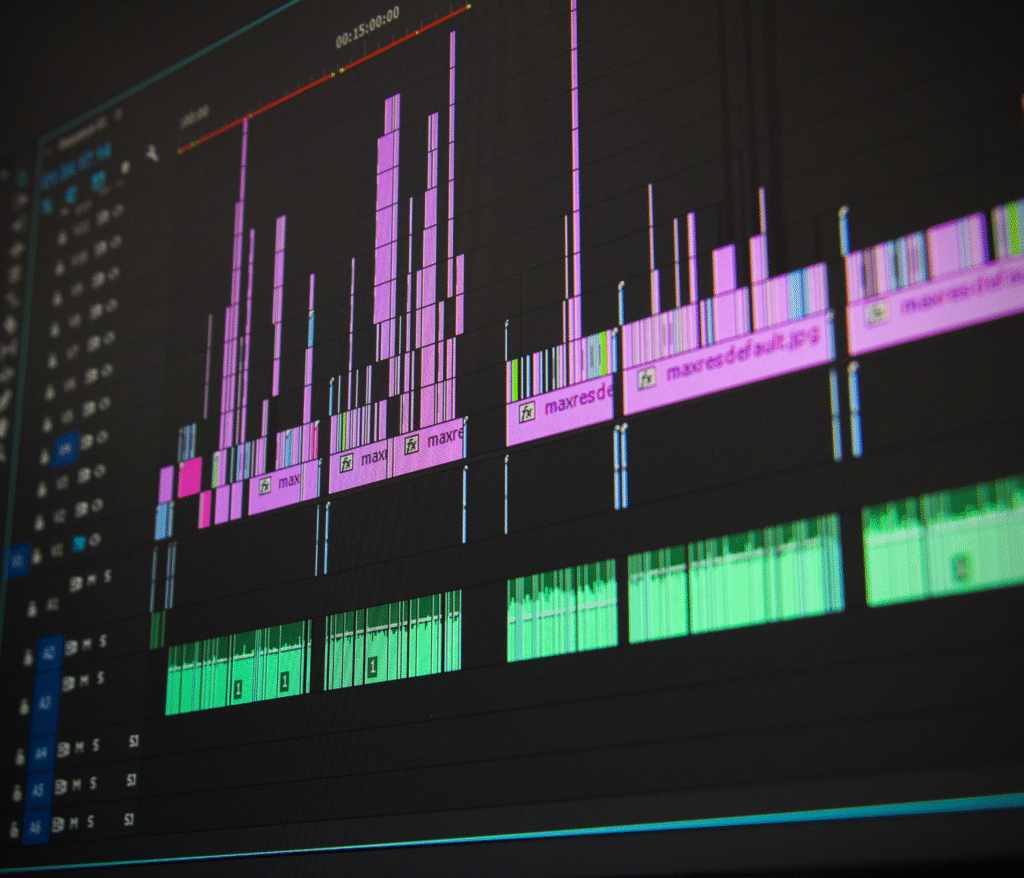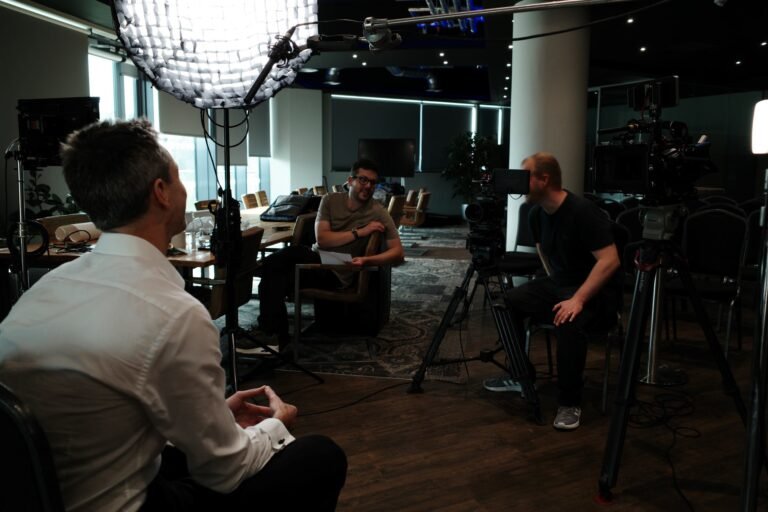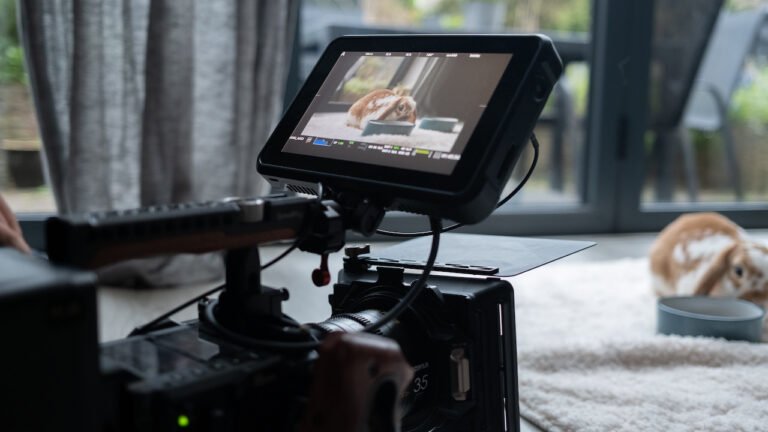When you think about what makes a video truly stand out, you’ll find that it’s not just one factor but a combination of several key elements. You start with solid pre-production planning, defining your objectives and understanding your target audience. But that’s just the beginning. Effective storytelling, which includes a narrative arc and strong characters, can captivate viewers. Then, there’s the technical side—lighting and sound quality are essential. Finally, post-production editing ties everything together. But how do you guarantee each of these elements is executed flawlessly? Let’s explore the finer details and techniques that can elevate your video production.
Key Takeaways
- Clearly define project objectives and target audience.
- Develop a detailed script or storyboard to guide the video production process.
- Utilize effective lighting techniques to enhance visual quality.
- Ensure high sound quality by selecting appropriate microphones and monitoring sound in real-time.
- Organize footage meticulously and use editing software to create smooth transitions and set the tone.
Pre-Production Planning
Before rolling the cameras, you need to meticulously plan every aspect of your video production during the pre-production phase. Start by defining your project’s objectives clearly. What do you want to achieve with this video?
Next, identify your target audience. Knowing who you’re speaking to will shape your content, tone, and style.
Develop a detailed script or storyboard. This blueprint will guide your entire production process, ensuring that every scene serves a purpose. Pay attention to your shot list, determining the types of shots and camera angles you’ll need.
Location scouting is vital. Choose settings that align with your story and technical needs. Make sure you have the necessary permits and understand the logistics involved.
Don’t forget to plan your budget meticulously. Allocate funds for equipment, talent, post-production, and unforeseen expenses.
Assemble your crew, clearly defining roles and responsibilities. Effective communication is key here; everyone should understand the project’s vision.
Finally, create a detailed production schedule. Outline each phase, from shooting to editing, to keep the project on track.
Effective Storytelling
Effective storytelling is the cornerstone of any successful video production, as it captivates your audience and drives your message home. Start by crafting a compelling narrative arc. Define your beginning, middle, and end, ensuring that each section flows smoothly. Your story should have a clear conflict and resolution to keep viewers engaged.
Incorporate strong characters. Whether you’re using actors or real people, your characters need to be relatable and evoke emotion. This will help your audience connect with the story on a deeper level.
Visual elements are essential. Use visual metaphors and symbols to reinforce your narrative. Make sure your visuals aren’t just decorative but serve the story’s purpose. Every shot should contribute to the narrative, either by advancing the plot or deepening character development.
Pay attention to pacing. Good storytelling requires a rhythm that keeps viewers engaged. Avoid dragging scenes; keep the action moving without overwhelming your audience.
Lighting Techniques in Video Production
Mastering lighting techniques can greatly enhance the mood and quality of your video production. To achieve best results, consider using a three-point lighting setup. This classic technique involves a key light, fill light, and backlight.
The key light is your main source, providing the majority of illumination and establishing the subject’s shape. Position it at a 45-degree angle to add depth.
Next, introduce a fill light opposite the key light to reduce harsh shadows. This softer light ensures your subject’s features are well-defined without being overly dramatic. Adjust its intensity to control the contrast and achieve the desired atmosphere.
Finally, use a backlight to separate your subject from the background, creating a more three-dimensional look. Position it behind your subject, angled towards the back of their head or shoulders.
Remember, natural light can be a powerful tool as well. Utilize windows or outdoor settings during the golden hour for a naturally flattering effect.
Always monitor your light sources and adjust accordingly to maintain consistency.
Sound Quality for Video Production
Achieving high-quality sound in your video production is essential for engaging your audience and conveying your message effectively. Poor sound quality can distract viewers and undermine even the most visually stunning footage.
Here are four key elements to keep in mind for excellent sound quality:
- Microphone Selection: Investing in the right microphone is vital. Lavalier mics are great for interviews, while shotgun mics excel in capturing directional sound. Choose a mic that fits your specific needs.
- Sound Environment: Scout for a location with minimal background noise. Indoor settings often require soundproofing measures, such as foam panels or blankets, to eliminate echo and reverb. Outdoor shoots might need windshields and boom poles.
- Recording Settings: Make sure your audio recorder is set to the correct levels. Avoid peaking by monitoring the sound levels and maintaining headroom. Record in uncompressed formats like WAV to preserve sound quality.
- Sound Monitoring: Always monitor your sound in real-time using quality headphones. This allows you to catch issues like interference or distortion immediately, giving you the chance to correct them on the spot.
Post-Production Editing
Once you’ve captured high-quality audio and video, the post-production editing process becomes your playground for crafting a compelling narrative. Begin by organizing your footage meticulously—label scenes, and separate takes. This organization will save you precious time and help you maintain a clear vision.
Next, delve into your editing software. Use tools like Adobe Premiere Pro or Final Cut Pro to start assembling your timeline. Cut unnecessary scenes and tighten the pacing to keep your audience engaged.
Don’t underestimate the importance of transitions; they can smooth out jumps between scenes and maintain the flow.
Sound design is essential at this stage. Sync your audio perfectly with the visuals, and lay down background music or sound effects to enhance the mood. Use EQ and compression to balance audio levels, ensuring clarity.
Color grading is your opportunity to set the film’s tone. Adjust brightness, contrast, and saturation to create a cohesive look.
Don’t forget to add text and graphics where necessary, such as lower thirds or end credits.
Frequently Asked Questions
How Do You Choose the Right Camera for Your Project?
Consider your project’s requirements and budget. Evaluate camera resolution, frame rate, and low-light performance. Confirm compatibility with your editing software. Don’t overlook ergonomics and weight, especially for handheld shooting. Always test before making a final decision.
What Budget Considerations Should Be Made for a Video Production?
Balancing creativity and costs is essential. You’ll need to allocate funds for gear, crew, locations, and post-production. Don’t forget hidden expenses like permits or insurance. Effective budgeting guarantees your vision comes to life without financial stress.
How Can You Secure the Necessary Permits for Shooting Locations?
You’ll need to contact local authorities or property owners, fill out required applications, and guarantee compliance with regulations. Be proactive and detailed to avoid delays. Good project management keeps your creative vision on track.
What Are the Best Practices for Casting Talent?
When casting talent, prioritize clear communication, detailed auditions, and chemistry reads. Use professional casting calls, vet resumes, and hold callback sessions. Guarantee alignment with your creative vision and project requirements to find the perfect fit.
How Do You Manage a Video Production Schedule Effectively?
Imagine missing an important deadline. To manage a production schedule effectively, you’ve got to prioritize tasks, allocate resources wisely, and communicate constantly. Use project management tools to track progress and adjust plans as needed. Or just get in touch with Gray Media to achieve your video production goals today!
Conclusion
Imagine you’re a master chef crafting a gourmet meal: pre-production planning is your recipe, effective storytelling your ingredients, lighting techniques your presentation, sound quality your seasoning, and post-production editing your final plating.
Each element must harmonize to create a successful video production. Like a memorable dish, your video will leave a lasting impression when all these elements come together flawlessly.
With meticulous attention to detail, you’ll serve your audience an unforgettable visual feast.






